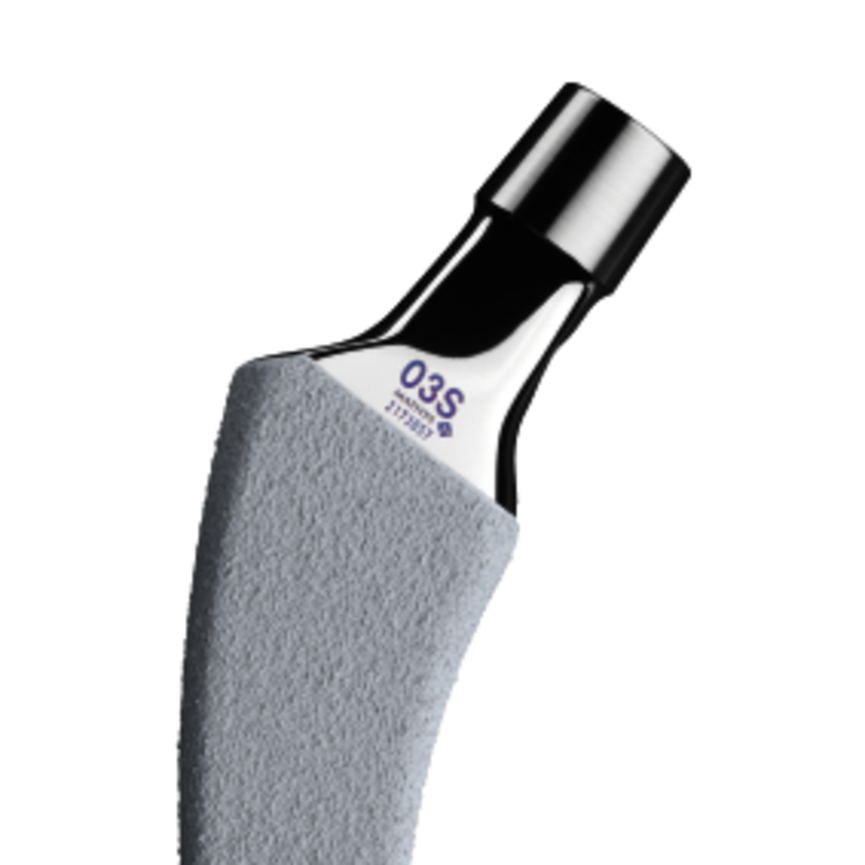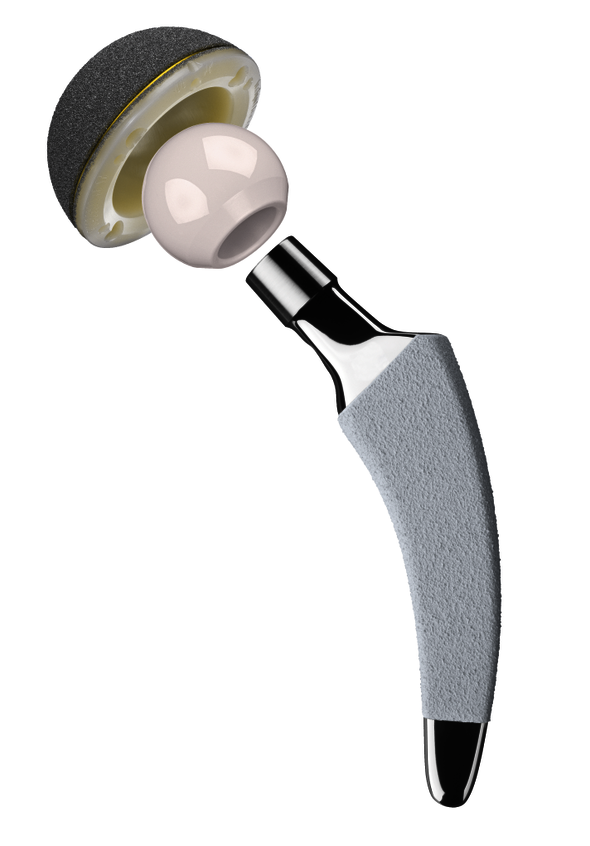The stem
The hip stem is available in a variety of versions. They differ from each other mainly in surface and shape.
Implants with a smooth, polished surface are anchored in the bone with cement Stems with a rough-blasted, porous surface or a special coating are usually implanted in the bone – over time, the bone grows onto the stem and provides good stability.
Among the stems that are anchored cement-free, two models meet the current standards:

The straight stem
This stem type is a classic among hip prostheses. It has been successfully implanted for over 30 years, as evidenced by a large number of clinical trials. The straight metal stem is inserted into the thigh bone before the head is placed onto it. It holds firmly even in soft or brittle bone.

The short stem
This stem type is one of the newer developments in orthopaedic surgery. Compared to the straight stem, this implant is substantially shorter and needs to be inserted less deeply into the bone. With this prosthesis, the aim is to optimally reconstruct the natural tension of the musculature and the ligaments. Additionally, the curved insertion of the stem leads to less destruction of bone material.

